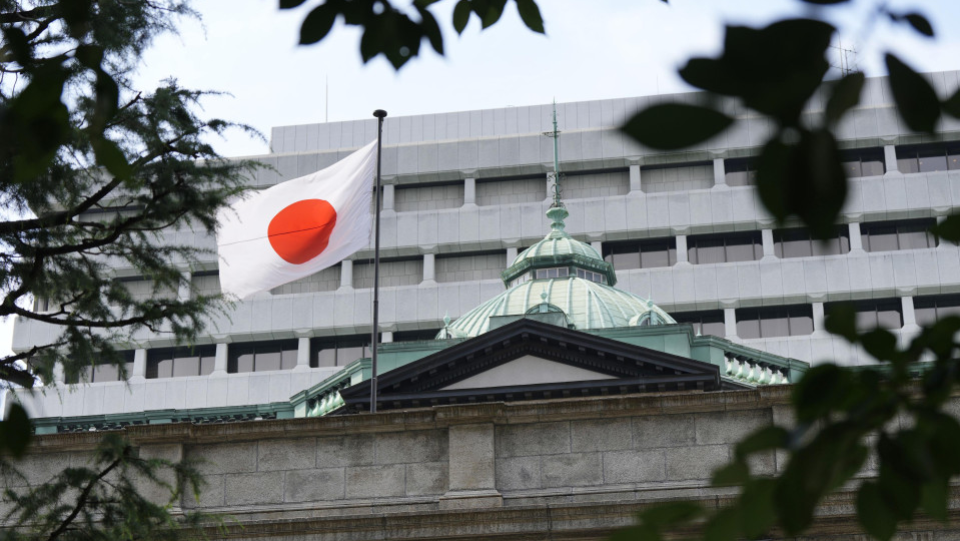Japan’s Monetary Policy: Why the Bank of Japan is Sticking to Its Rate Hiking Cycle
As global inflation continues to weigh on economic recovery, Japan finds itself in a unique situation. Despite Prime Minister Shigeru Ishiba’s dovish turn, signaling a more cautious stance, the Bank of Japan (BOJ) is still expected to maintain its rate hiking cycle to support long-term inflation control. The BOJ’s primary goal is to foster sustainable wage growth and boost domestic consumption while managing inflation expectations.
This blog explores the reasons behind Japan’s continued rate hikes, the effect of PM Ishiba’s dovish turn, and what the future holds for Japan’s economic and monetary policies.
The Role of the Bank of Japan in Rate Hikes
Japan’s interest rate policy has been a subject of intense scrutiny in recent years. After decades of deflation and low inflation, the BOJ implemented aggressive monetary easing policies, including negative interest rates, to encourage spending and investment. However, as inflation pressures grew in the global market, the BOJ has shifted its stance to cautiously embrace rate hikes to avoid runaway inflation while aiming for stable growth.
Why Continue Rate Hikes?
Even though Prime Minister Shigeru Ishiba has taken a more dovish stance, urging patience and emphasizing the risks of over-tightening, the BOJ remains committed to its rate hiking cycle. The reasoning lies in the need to ensure sustainable wage growth and control inflation expectations. Recent wage negotiations in Japan have led to the highest levels of wage increases in decades, which is a positive indicator for domestic demand and inflation stabilization(JPM Private Bank).
Bank of Japan’s Approach to Monetary Policy
The Bank of Japan’s monetary policy has long been guided by the principle of reflation, with the aim of creating a virtuous cycle of wage growth and inflation. As inflation began to rise globally, Japan faced the unique challenge of balancing inflation control with promoting growth. With the inflation rate stabilizing and real wage gains slowly taking hold, the BOJ sees a gradual exit from negative interest rates as a logical next step.
However, the BOJ is expected to take a cautious approach, ensuring that the labor market and wage growth remain stable before making any drastic policy changes.
Japan’s Inflation Expectations and Economic Outlook for 2024
Japan’s inflation expectations have shifted, as the country sees more consistent upward pressure on prices, partially driven by supply chain issues and rising global energy costs. However, Japan’s economic outlook for 2024 suggests that while inflation is manageable, external risks remain, particularly due to slower growth in developed markets like the U.S. and China.
Factors Affecting Japan’s Inflation
Several factors contribute to Japan’s current inflation trajectory:
- Imported inflation from global energy and raw material prices.
- Supply chain disruptions affecting manufacturing costs.
- Labor market tightening, which has led to higher wages.
These factors have raised concerns about Japan’s ability to maintain price stability, but analysts believe the BOJ’s measured approach to interest rate hikes will help manage inflation risks while supporting economic growth.
The Influence of Shigeru Ishiba’s Dovish Turn on Policy
Prime Minister Shigeru Ishiba’s dovish turn has been a topic of discussion in Japan’s economic circles. While Ishiba acknowledges the importance of long-term inflation control, his administration favors a more cautious approach, focusing on bolstering economic recovery first. Ishiba’s stance emphasizes the risks of prematurely tightening monetary policy, particularly as Japan’s economy faces headwinds from global supply chain disruptions and weaker external demand.
Balancing Growth and Inflation
Ishiba’s dovish stance has led to debates about whether Japan should delay further rate hikes. While the BOJ remains committed to raising rates, the Prime Minister’s approach encourages flexibility, allowing room for policy adjustments if economic conditions worsen. Ishiba is also focused on promoting policies that encourage domestic consumption and investment, which may help cushion the economy from potential global shocks.
Impact on the Yen: USD to JPY Rate Movements
As Japan navigates its monetary policy challenges, the Japanese yen has fluctuated against other global currencies, particularly the US Dollar. The USD to JPY rate movements are driven by several factors, including interest rate differentials between the U.S. and Japan, global economic conditions, and Japan’s domestic monetary policies.
Yen Strength Forecast for 2024
Analysts predict that the Japanese yen strength forecast may see modest improvement as the BOJ gradually normalizes its monetary policy(JPM Private Bank). With the U.S. Federal Reserve nearing the peak of its interest rate hikes, a potential narrowing of the rate gap between the U.S. and Japan could lead to a stronger yen. This trend may also be supported by Japan’s improving wage growth and steady inflation expectations.
However, the yen’s strength is closely tied to the global economy, and further slowdowns in developed markets could limit the currency’s gains.
Japan’s Government Bond Yields and Economic Impact
Another critical factor to watch is Japan’s government bond yields, which have been rising due to market expectations of future rate hikes. Higher bond yields reflect the market’s belief that the BOJ will eventually tighten its policy further, leading to higher interest rates. Rising yields have implications for Japan’s borrowing costs and could impact government spending on key initiatives aimed at stimulating the economy.
How Bond Yields Influence Economic Growth
Higher government bond yields can slow economic growth by increasing borrowing costs for businesses and consumers. However, Japan’s bond yields are still low by global standards, and the BOJ’s gradual approach to tightening monetary policy should prevent a significant increase in borrowing costs.
For investors, Japan’s bond yields offer insights into the country’s inflation expectations and future monetary policy. As the BOJ continues to adjust its policies, bond yields will play a critical role in determining the outlook for Japan’s economy.
Navigating Japan’s Monetary Policy in 2024
Japan’s monetary policy remains in a delicate balancing act, as the Bank of Japan continues its rate hiking cycle while managing the potential risks of inflation. Despite Prime Minister Ishiba’s dovish turn, the BOJ is expected to stick to its path of gradual rate hikes, driven by the need to support wage growth and stabilize inflation expectations.
As Japan enters 2024, the country’s economic outlook will be shaped by its ability to manage inflation while supporting domestic consumption. The impact of Japan’s interest rate policy, rising government bond yields, and fluctuations in the USD to JPY rate movements will be crucial indicators of the country’s economic resilience.
For more insights into Japan’s economic policies and the global economy, visit Regent Studies. To learn more about Japan’s monetary policy outlook, check out J.P. Morgan Private Bank(JPM Private Bank).



